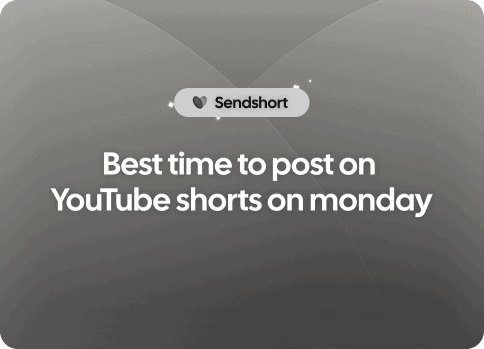Understanding viewer habits on weekdays vs. weekends
Gauging the optimal time to post YouTube Shorts requires a nuanced understanding of user online activity. During the weekdays, including Monday, viewer patterns tend to differ significantly from those observed over the weekend. While weekends see a more relaxed viewing schedule, with higher engagement throughout the day, weekdays show peaks primarily before and after typical work hours.
To comprehend these trends deeply, it’s crucial to focus on what data says about Mondays. This could help pinpoint those specific hours when audiences are more likely to engage with new content actively.
Why Monday matters for YouTube Shorts
Mondays hold a unique place in the weekly cycle as they mark the beginning of the workweek and usually witness a spike in digital activity as people settle into their office routines or start their week at home. This spike can be leveraged effectively for YouTube Shorts.
Research suggests that posting during high-engagement windows on Monday increases visibility for your content, potentially amplifying reach and viewership more than other weekdays like Tuesday or Thursday.
Analyzing the best hours on Monday for maximum impact
Diving deeper into the specifics, the timing of your post on Monday can dramatically influence its performance. Analysis shows that the following times tend to work best:
- Early morning (5 AM to 7 AM EST): As users check their phones for updates while starting their day.
- Lunch Hours (12 PM to 2 PM EST): When individuals take breaks and browse social media.
- Post-work peak (5 PM to 8 PM EST): After work ends, there is often a surge in online activity as viewers unwind.
This pattern highlights three distinct windows which accommodate various lifestyle routines, increasing the likelihood of catching viewers right when they are most receptive.
Comparative analysis: Monday vs. other weekdays
When comparing Monday to other days such as Tuesday or Wednesday, the beginning of the week generally sees an increased readiness among viewers to consume fresh content, as opposed to mid-week when saturation might set in. By comparing viewer engagement data across different weekdays, content creators can strategically decide not only the best time but also the best day of the week to post their shorts for maximizing audience interaction.
For instance, reports from multiple analytic tools suggest an approximately 20% increase in engagement rates for videos posted on Mondays by early morning compared to those posted mid-week at the same hour.
Seasonal variations in viewer behavior
Another aspect worth considering is seasonal fluctuation. Viewer behavior tends to change based on seasons—like summer vs. winter—or around significant holidays. For example, on long holiday weekends, even a Monday might mimic weekend-like consumption patterns. Keeping an eye on these trends provides an extra dimension to your posting strategy, making your approach highly adaptable and sensitive to viewer preferences.
During regular seasons without holidays, sticking to the identified high-impact hours during Monday will maintain consistency, essential for building audience habit and expectation around your content releases.
Case studies and success stories
Examining real-world examples, some content creators have documented their trials and errors and shared success metrics, reinforcing the notion that timing indeed plays a substantial role in content uptake. Specific cases reveal how slight adjustments in posting schedules resulted in visible differences in viewership numbers.
Moreover, analyzing these case studies helps underline common outcomes and pitfalls, offering a practical blueprint tailored to YouTube Shorts creations rather than generic video postings.
The global perspective on posting times
Youtube being a global platform, the ideal posting time should also consider geographic and demographic details of the target audience. For instance, if your primary viewer base is in North America, the EST or PST time zones become more relevant. However, for an international audience spanning continents, finding a middle ground, which might include very late night or morning timings in EST, helps capture the widest possible viewership.
Tools such as YouTube Analytics can provide crucial insights into where your viewers are located, allowing you to further refine your posting schedule to suit international audiences.
Practical tips for leveraging analytics
The use of analytics tools can serve as the backbone of your strategic planning. These platforms offer deep dives into not just when your viewers are online, but more precisely, how they interact with content. Metrics like view duration, interaction rate (likes, comments, shares), and replay percentage give content creators a broad spectrum of indicators to operate from, improving not just timing but overall content strategy.
Regularly updating your analytical review process every quarter can keep you aligned with any shifts in viewer behaviour, ensuring that your posting schedule remains optimized year-round.
Incorporating user feedback for enhanced strategy
Beyond analytics, direct user feedback through comments, polls, and community tabs can offer actionable insights. Such real-time data directs towards viewer preferences more acutely and fosters a community around your channel, demonstrating responsiveness that might translate into prolonged engagement and loyalty, especially pertinent on dynamic platforms like YouTube.
Enabling notifications for an updated segment of your audience might also trigger immediate views as soon as you upload, an underrated yet effective tactic to boost immediate engagement statistics.







